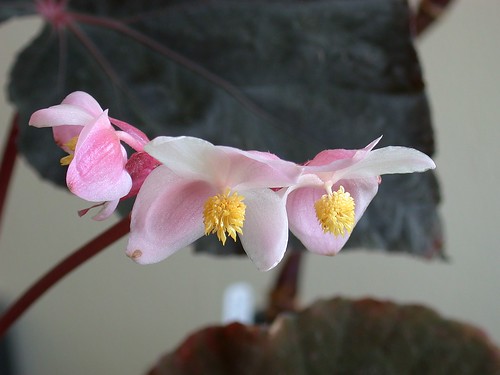
Male flowers of Begonia 'Taconite', strutting their stuff
It's officially the end of the 2013 begonia breeding season for me. I made at least 20 different crosses this year, but all my begonias have finally finished blooming and the last capsule of the last cross has ripened. I already have some good-sized seedlings from the first few crosses, and small seedlings from some later crosses, but I'll need to do one more round of sowing of the very last crosses. I'm running a little lat this year; I try to get all my crosses planted by early December so the resulting hybrid seedlings will be big enough to plant out in the garden by spring, usually early May.
Begonia flowers come in all different shapes, sizes, and colors. They also come in two sexes! Like their relatives in the cucumber family (cucumbers, squashes, etc) the pistillate (female) flower has a stigma and inferior ovary, whereas the staminate (male) flower has only stamens. In most species, the ovary of the female flower has 3 wings, one of them often longer than the rest.

Male and female flowers of Begonia deliciosa
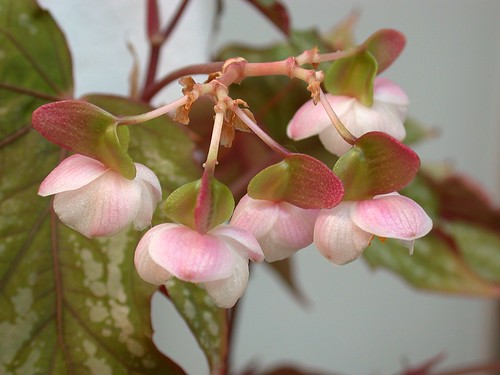
Female flowers of Begonia 'Charles Jaros'
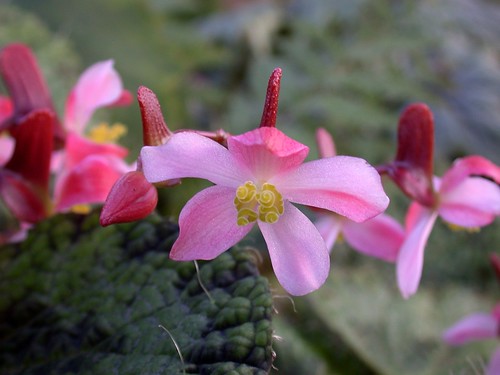
Female flower of Begonia sizemoreae (featured as UBC's Botany Photo of the Day)
To prevent self-pollination and promote outcrossing, many begonia species will bloom with all male or all female flowers at the same time, as demonstrated by the Vietnamese species Begonia sizemoreae:
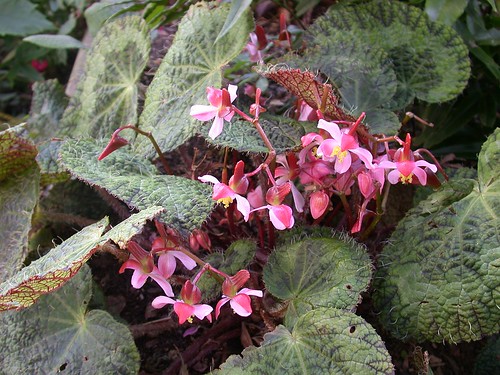
Begonia sizemoreae with female flowers
When making begonia crosses, the basic principle is to apply pollen from the male flowers of one parent onto the stigmas of a female flower of the other parent. I generally pluck the entire male flower and dust its anthers against the stigmas of the female flowers, as in this series of photos:
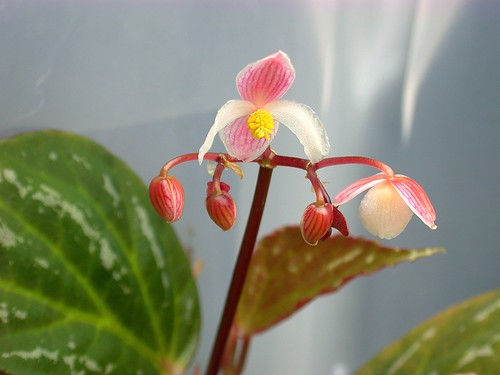
Begonia hatacoa, male flower (not used in cross)
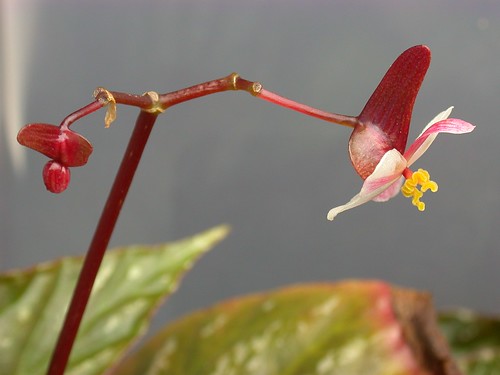
Begonia hatacoa, female flower
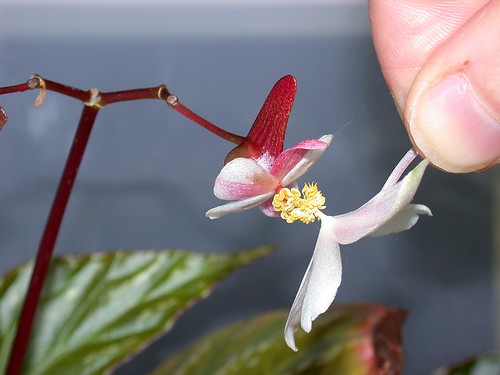
Begonia hatacoa, female flower being pollinated with male flower of another begonia
If the pollination is unsuccessful, after 2 or 3 days the entire flower falls off, ovary and all. But if successful, the petals fall off and the ovary swells. In the group of species and hybrids I'm working with, the pedicel (flower stem) begins to bend down, flipping the ovary upside-down with the formerly upper wing now hanging down from the developing capsule. As the capsule expands this wing lengthens, sometimes considerably. After 6-8 weeks the ripening capsule dries out and turns brown, at which point the seeds can be harvested and sown.
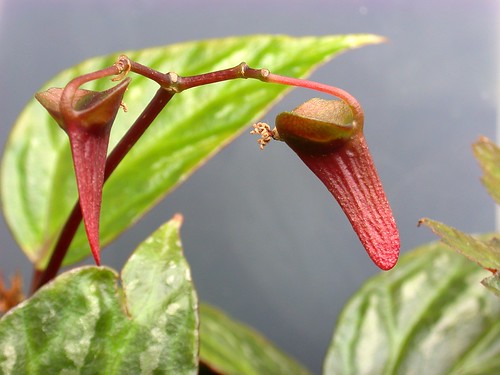
Begonia hatacoa, ripening capsules
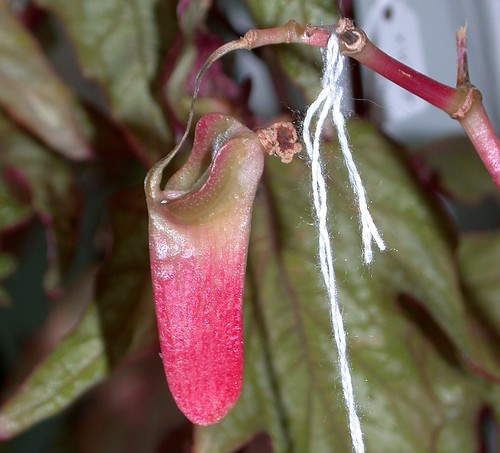
Begonia 'Taconite', ripening capsule (original uncropped photo here)
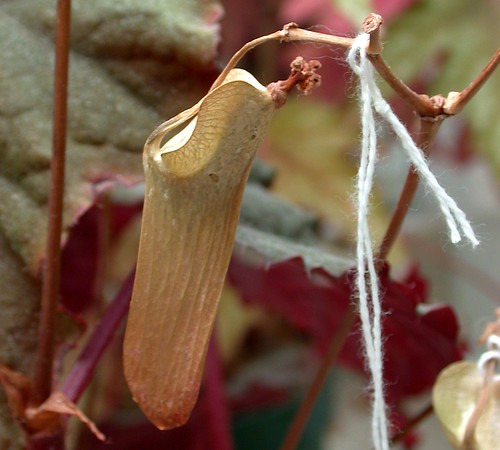
Begonia 'Taconite', fully ripened capsule
But that's the easy part! Now I have gazillion tiny seeds to plant from all those crosses and will spend the next several months thinning, culling, repotting, and selecting until the seedlings are big enough to plant out in the spring.
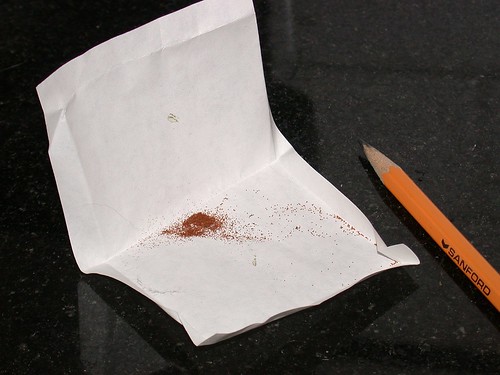
Begonia seeds, ready for sowing

Hybridising Begonias is a potentially dangerous pass time that I am contemplanting.....
ReplyDeleteThe real problem is when the seedlings start getting bigger. I don't have much trouble culling, but I would really like to be able to grow more of them to maturity and I'm running out of space awfully fast. Thinking about setting up another light stand...
DeleteI'm in the Begonia Yahoo Group and found my way here from a posting there. This subject is especially interesting to me as a wannabe begonia hybridizer. I planted lots of seeds starting in early Nov and I'm watching with breathless anticipation what will happen. I live near Sacramento CA so we get 100 degree weather and have had 20+ degree weather for the last week, so I understand your opinion about hardy begonias. Great pics!! I'll be following...
ReplyDeleteI'm definitely encouraging people to try more begonias in the ground, and to leave them in the ground over the winter. I think a lot of the Asian species and their hybrids have potential for hardiness--ironically, heat tolerance is proving to be a bigger issue in my breeding program!
Delete